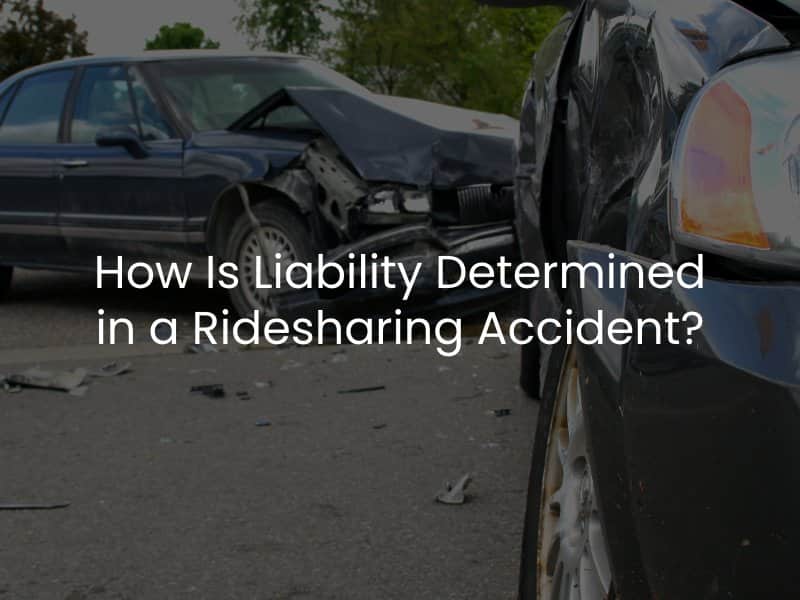How Is Liability Determined in a Ridesharing Accident?
Accidents involving Uber, Lyft, or any other type of rideshare service can be confusing for those who sustain injuries and property damage. This is particularly true when it comes to determining liability for the incident. Here, we want to discuss how liability gets determined after a rideshare accident in California. We strongly encourage any injury or property damage victim harmed in a rideshare accident to reach out to a skilled Sacramento rideshare accident attorney for assistance.

Vehicle Accidents and Rideshares – The Investigation Matters
Almost every vehicle accident that occurs in the state of California must be reported to law enforcement officials. Not only does this include accidents involving traditional vehicles, but it also includes any accident involving a rideshare vehicle in the state.
Law enforcement officials typically come to the scene of a crash to conduct a preliminary investigation. This is not always a thorough investigation, particularly for cases that do not involve death or severe injuries. However, law enforcement officials do often take statements from those at the scene, craft an initial narrative of what they believe occurred and create a diagram of the damage.
Other types of evidence can be gathered at the scene of the incident by those involved. Typically, the evidence available at the scene includes cell phone footage in the form of photos. These photos can include vehicle damage, injuries, causes of the crash, debris and skid marks, weather and traffic conditions, and more. Sometimes, there is available camera footage nearby, including dashcam footage, footage from nearby homes or businesses, etc.
Finally, statements from eyewitnesses can certainly help these claims, particularly if the names and contact information of the eyewitnesses get written down so they can be contacted later on by a personal injury attorney.
Determining who caused a rideshare crash is important. If the rideshare driver was at fault for the incident, then individuals will pursue a claim against their insurance carrier and the insurance carrier of the rideshare company. If the incident was caused by another driver, claims go to the other driver’s insurance carrier or against them personally.
Determining The Rideshare Driver’s Status
If it is determined that the rideshare driver did indeed cause the incident, it will be important to know whether or not they were engaged in actual work duties at the time the incident occurred.
- Not on duty. If a rideshare driver is not on duty at the time a collision occurs but they caused the incident, then those affected will file a claim against the driver’s personal insurance carrier to recover compensation.
- Signed in to the rideshare app. If the rideshare driver was signed into the app to work but did not have a passenger or was not on the way to pick one up when the incident occurred, the claim will still primarily be against the driver’s personal insurance carrier. However, both Uber and Lyft provide supplemental insurance coverage if the personal insurance carrier limits are exhausted.
- On the way to a passenger/has a passenger. If a radio driver causes a crash and they are on the way to pick a passenger up or already has a passenger, then both Uber and Lyft have insurance policies worth more than $1 million to cover all of those involved.
If you have any questions about your particular rideshare accident, please reach out to a skilled accident attorney for assistance with your case as soon as possible.